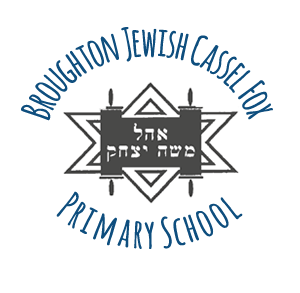Computing Curriculum Statement
Intent
Our computing curriculum has been specifically tailored to meet the unique context of our school. It is designed to be broad and balanced within the context of the limitations based on our community and religious ethos, providing all pupils with the opportunity to master their learning and deepen their knowledge, making sense and giving purpose as to why we learn about computing. Teachers will provide pupils with opportunities to help them change and transform our society, putting their faith into action.
At Broughton Jewish we use computing to better prepare the children for life in 21st Century Britain, encouraging children to develop a greater understanding of the technological world around them. We have used the learning during lockdown to keep our curriculum relevant and useful.
Computing has deep links with mathematics, science, and design and technology so links well with our STEM project and is used to enhance and deeper their understanding of the Jewish festivals in which they are part of. The core of computing is computer science, in which pupils are taught the principles of information and computation, how digital systems work, and how to put this knowledge to use through programming. Building on this knowledge and understanding, pupils are equipped to use information technology to create programs, systems and a range of content. Computing also ensures that pupils become digitally literate – able to use, and express themselves and develop their ideas through, information and communication technology – at a level suitable for the future workplace and as active participants in a digital world.
We aim to build high levels of competence in the subject specific skills of:
- Algorithms and Programming
- Information Technology
- Digital Literacy
Implementation
Computing is taught through the framework of the 2014 National curriculum. The principles and content of its requirements make up the programme of study at Broughton Jewish.
The school uses the ‘Twinkl.’ Schemes of work, focusing on Digital Literacy, Information Technology and Computer Science. To help ensure children have the opportunity to develop a wide range of skills, experiences and competencies with technology, the curriculum has been broken down into 6 key areas, with the core principles permeating through each area.
- Computing skills
- Using and applying
- Online safety
- Programming
- Computer art and design
- Presentation skills
These principles are linked to the school’s Age-Related Expectations (AREs) in computing for each year group, which allows a consistent application of the curriculum throughout the Key stages. Year group curriculum books are kept for each year group. The books provide evidence of coverage within the subject and key reference to where the children meet the A.R.E statements. Each year group has a class login and an individual file to save their work on the system. A curriculum coverage file is kept for each cohort. This enables both class teachers and the subject leader to monitor coverage and identify progress made throughout the lifetime of a cohort in the school.
Broughton Jewish is equipped with a set of IPADs and chrome books. These are kept in a trolleys, each year group has their own IPAD to use in class, each teacher a user name and password to access the school system and school e-mail. We have a computing technician to monitor and maintain the database and school network who visits on a weekly basis.
Assessment includes any final pieces of work and any whole class assessment that staff might undertake. Class teachers evaluate the quality of coverage of the ARE in Computing and inform the aspects of learning that need to be strengthened to improve the quality of provision and to enhance pupil progress through the use the outcomes of these assessments.
Impact
Computing is taught a part of an embedded curriculum approach and enhances the learning through our STEM project and our topics. As children progress through school they will become increasingly confident in:
- The application of their digital skills within all aspects of the curriculum,
- Becoming increasingly efficient and effective communicators, collaborators and analysts,
- Showing imagination and creativity in their use of ICT in different aspects of their learning and life beyond school.
- E-safety and the risks involved when using the internet.
We seek to inspire in children a love of computing and the aims of computing are to equip children with the skills necessary to use technology to become independent learners. The teaching style that we adopt is as active and practical as possible.

